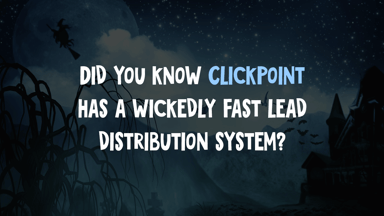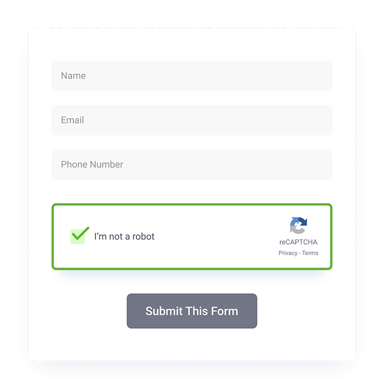Start 2022 by Reducing Friction in Your Sales Process
Friction in sales is anything that impedes the flow of reaching a deal. That could be a flaw in your product offering, poor messaging in your marketing campaigns and sales pitches, or something much less obvious.

Friction vs. Fuel
An excellent podcast episode by Hidden Brain explores the difference between “friction” and “fuel” and how it impacts all aspects of a company's ability to take off or stall out.
Fuel is any resource that you believe will move your company forward. Fuel can be money, staff, a harder sales pitch, or any aggressive resource allocation.
Friction is any obstacle, visible or otherwise that impedes your success, slows your growth, or stalls your progress.
Understanding how these two ideas work together can make a difference in 2022, helping you surpass your goals and win more business.
Example
The podcast here discusses a furniture company that launched a fully customizable, user-designed sofa. People loved the idea and spent hours designing their dream couch. They engaged and invested time, but they weren’t following through with the purchase. Every business faces that at some point - great idea/product, great feedback, little to no conversions.
How would you address this problem? The standard approach would be to apply fuel: Lower prices, more aggressive marketing, product improvement.
“The job of fuel is to elevate, enhance the appeal of an idea. So, using incentives, using an emotional appeal, giving data, evidence, all of that is designed to demonstrate the value of the new idea and initiative. Friction is the psychological force or the set of forces that resist change. Now, frictions take different forms, and we often don't see them. We often don't talk about them, but in essence, frictions act as drag on innovation and change.” - Loran Nordgren
Adding Fuel
That’s exactly what the company did. They added fuel. And they did attract more prospects, but it didn’t boost their conversion rate. After bringing in a consultant (more fuel), they uncovered an interesting fact: potential customers didn’t know what to do with their old couches. They wanted the new, customized sofa, but they didn’t know how to get rid of the old one. The new product wasn’t the problem; old couches were. Friction. If they offered free sofa removal, they’d convert. And then boom, sales took off. It turned out that fuel was not the problem; friction was.
This video is an excellent illustration of the idea. Pedaling harder adds fuel, aerodynamics reduces friction:
In sales, we tend to add fuel rather than reduce friction. We work harder before we work smarter. Fuel is more leads, increasing ad spend, adding more salespeople, or new sales material. Most of the time, you’ll find that these fuel-based initiatives are ineffective without first removing friction. What does that friction look like for a business that relies on leads and salespeople to win new business?
Sales Process Friction
External Friction – Things that impede your sales process brought on by the customer.
- An unknown deterrent to prospects saying yes to doing business with your company.
- Your website or landing page has a value proposition that is not clear, with a clear call to action.
- Poor customer reviews steer your prospect to a competitor.
Action Plan
Take an empathetic approach and try to understand your customer. Do prospects seek the path of least resistance when working with a new company? Do they need a consultative approach? By focusing on your customer's needs and truly understanding why they might want to engage with your company, you can start to understand what roadblocks inadvertently prevent them from converting.
Internal Friction – Things that impede your sales process brought on by the process itself:
- Your sales process is not aligned with your marketing or messaging.
- Your sales process relies on salespeople manually adding leads to the CRM or sales solution.
- Your process relies on salespeople to update their leads without any guidance.
- You use multiple software solutions that are not integrated with each other.
- Your reporting lacks unity; data must be extracted from various sources and combined for clarity.
Action Plan
The first step to removing internal friction is to allow the space where your team feels they can discuss these friction points. If you have a culture where the best ideas come from the top, there is politics and fear of failure; your team might be hesitant to discuss these friction points openly and honestly. Create a culture where the best ideas win, open lines of communication are supported, and behavioral change is encouraged.
Bringing it all together
Capturing meaningful ROI becomes nearly impossible if there are friction points in the sales process; remove them so that salespeople can work their prospects efficiently. Modern salespeople need to respond to opportunities quickly. They need to know what steps come next to move a potential buyer through the customer journey. I always remember a quote from Steve Jobs, "Simple can be harder than complex: You have to work hard to get your thinking clean to make it simple."
At the start of 2022, take a minute to think about what tasks, processes, or initiatives are helping your company remove obstacles, roadblocks, and friction. Fuel is an easy button, but removing drag is what will set you apart from your competition. Support organizational feedback and challenge your team to think about friction vs. fuel and how it applies to your organizational goals.
Key Take-Aways
- Ask your potential customers what prevented them from buying your product or service; you might find out it is something you never expected.
- Automate lead intake, prioritization, and implement automated marketing outreach
- Ask your sales team which tasks they undertake, preventing them from making more calls and having more conversations with prospects.
- Look at your sales process and see which items are manual and which ones take your salespeople the most time.
- Create a culture and environment where your team feels comfortable challenging friction and reporting up the chain their thoughts on improvement.





